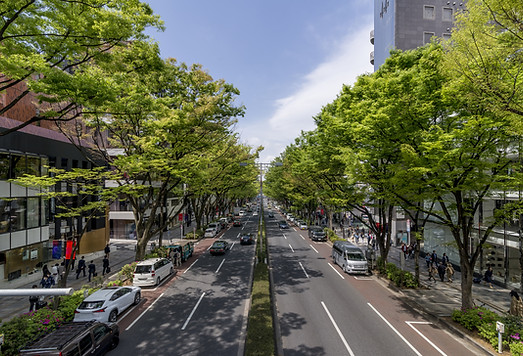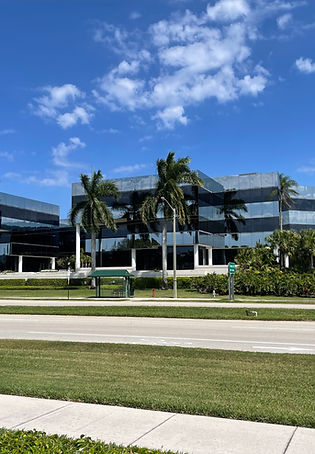
Smarter Heat Monitoring for Safer, More Resilient Communities
As cities experience longer and more intense heat waves, local governments need real-time visibility into urban heat conditions - not only for planning, but for protecting residents, workers, and infrastructure.
Cloudsyte’s Heat Monitoring IoT solutions help cities and counties measure, track, and respond to rising temperatures using a combination of ambient sensors, heat stress monitors, and AI analytics - all integrated into one unified resilience platform.
Why Heat Monitoring Matters
Extreme heat is one of the deadliest and most underestimated climate risks. It intensifies energy demand, worsens air quality, and threatens public health - especially for vulnerable populations and outdoor workers.
Yet most communities rely on a single regional weather station to represent an entire city.
That’s not enough to capture the block-by-block differences that drive urban heat vulnerability.
With Cloudsyte, municipalities can:
-
Map local temperature variations and hot zones
-
Track extreme heat days as a resilience metric
-
Automate alerts and response workflows
-
Support climate adaptation and public health planning
1. Fixed Ambient Heat Sensors
Overview
Fixed ambient heat sensors are the foundation of Cloudsyte’s heat monitoring solution.
These compact, weather-resistant devices capture real-time temperature, humidity, and solar data from neighborhoods, parks, and key public areas.
What They Measure
-
Air temperature
-
Relative humidity
-
Optional: barometric pressure, solar radiation, wind speed
Hardware Form
-
Small, weather-station–style nodes mounted on poles, rooftops, or light fixtures
-
Solar-powered or AC-powered with cellular or LoRaWAN connectivity
-
Rugged design for continuous outdoor use
How Cloudsyte Uses the Data
-
Heat Mapping: Identify urban heat islands - compare downtown corridors, industrial zones, and green spaces.
-
Extreme Heat Tracking: Record and analyze maximum daily temperatures and the number of “extreme heat” days.
-
Automated Alerts: Trigger notifications and tasks when thresholds are exceeded (e.g., Heat index > 100°F near Community Center).
-
Integration with CAAP Metrics: Feed directly into Climate Action and Adaptation Plan (CAAP) dashboards as “heat risk indicators.”
-
Community Dashboards: Share visual heat maps with residents, increasing awareness and engagement.
Why It Works
Ambient sensors are cost-effective, easy to deploy, and immediately valuable.
They integrate seamlessly into the existing Cloudsyte IoT module, alongside flood and air quality sensors, providing a fuller picture of environmental risk.
2. Heat Stress / WBGT Monitoring
For Worker & Public Health Protection
Beyond ambient air temperature, cities must also consider how heat affects people directly — especially outdoor workers, first responders, and vulnerable residents.
Cloudsyte integrates Wet Bulb Globe Temperature (WBGT) and Heat Index sensors to measure actual human heat stress and inform protective actions.
What They Measure
-
Temperature
-
Humidity
-
Solar radiation (direct sunlight exposure)
-
Radiant heat effects
Commonly Used In
-
Occupational safety programs
-
Sports and recreation monitoring
-
Construction and outdoor workforce management
Municipal Use Cases
-
Public Works and Utilities: Protect city crews maintaining streets, utilities, or sanitation under extreme heat.
-
Parks & Recreation: Monitor playgrounds, athletic fields, and outdoor event spaces for safe operating conditions.
-
Transit and Public Safety: Track exposure risk for transit operators, crossing guards, and emergency responders.
Cloudsyte Integration
Cloudsyte connects WBGT and heat index readings to your resilience workflows:
-
Automated alerts when WBGT exceeds safe thresholds
-
Dynamic task creation (e.g., “Reduce work duration,” “Issue hydration reminder,” “Open cooling stations”)
-
Analytics on exposure hours and trends for CAAP or occupational health reporting
Why It Matters
Integrating heat stress data transforms Cloudsyte from a climate dashboard into a public health and workforce safety tool, helping cities operationalize climate adaptation in daily management.
Practical, Transparent Approach
We emphasize realistic commitments:
-
We do not claim to replace regulatory monitors.
-
We do not oversell AI – instead, we focus on clear maps, trends, and simple thresholds.
-
Where appropriate, we encourage co-location of selected sensors near reference monitors or participation in partnerships with universities or agencies for calibration and validation.
Our goal is to give cities practical, actionable air data and integrate it into the broader picture of climate, transport, health, and equity.
Benefits to Cities and Counties
-
Early Warning & Faster Response: Stay ahead of heat emergencies and coordinate responses effectively.
-
Worker Safety & Compliance: Protect city staff and meet OSHA/NIOSH heat protection guidance.
-
Equity & Transparency: Identify heat-vulnerable neighborhoods and communicate data openly.
-
Data-Driven Planning: Use continuous data to inform urban greening, cooling centers, and infrastructure upgrades.
-
Scalable & Affordable: Start with a pilot network and expand easily as needs grow.
Why Cloudsyte
-
Purpose-built for local governments
-
Integrates IoT, AI, and CAAP tracking into one connected system
-
Offers modular expansion across air, flood, and heat monitoring
-
Enables collaboration across departments - from public works to health and planning
-
Provides real-time dashboards for internal use or public transparency

